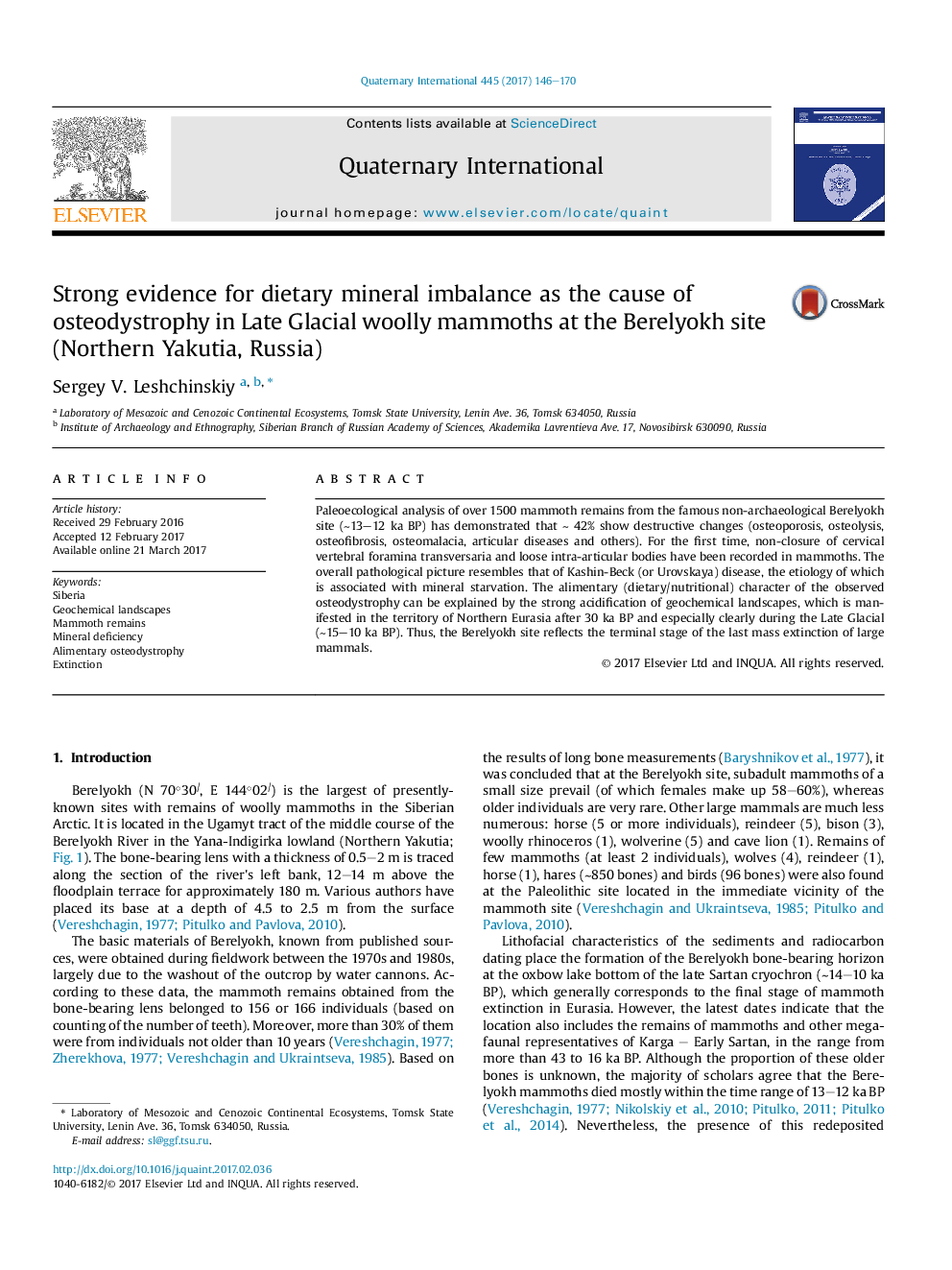| Article ID | Journal | Published Year | Pages | File Type |
|---|---|---|---|---|
| 5113229 | Quaternary International | 2017 | 25 Pages |
Paleoecological analysis of over 1500 mammoth remains from the famous non-archaeological Berelyokh site (â¼13-12 ka BP) has demonstrated that â¼Â 42% show destructive changes (osteoporosis, osteolysis, osteofibrosis, osteomalacia, articular diseases and others). For the first time, non-closure of cervical vertebral foramina transversaria and loose intra-articular bodies have been recorded in mammoths. The overall pathological picture resembles that of Kashin-Beck (or Urovskaya) disease, the etiology of which is associated with mineral starvation. The alimentary (dietary/nutritional) character of the observed osteodystrophy can be explained by the strong acidification of geochemical landscapes, which is manifested in the territory of Northern Eurasia after 30 ka BP and especially clearly during the Late Glacial (â¼15-10 ka BP). Thus, the Berelyokh site reflects the terminal stage of the last mass extinction of large mammals.
